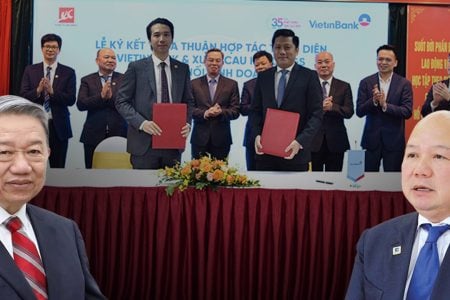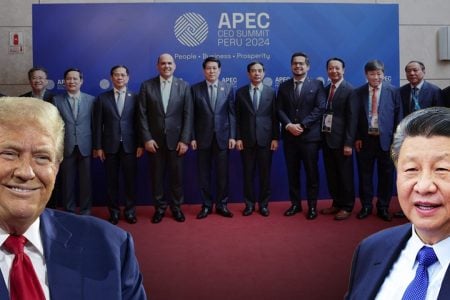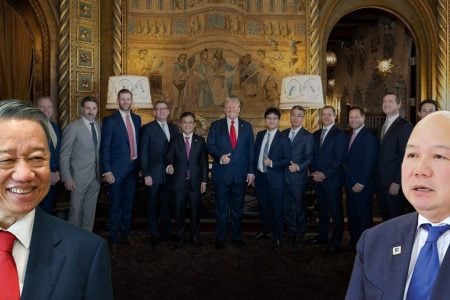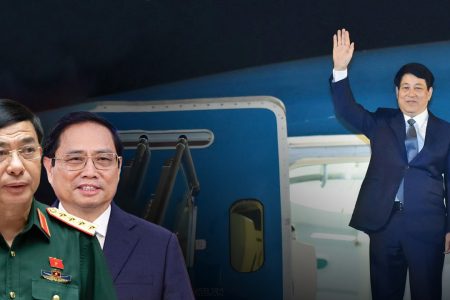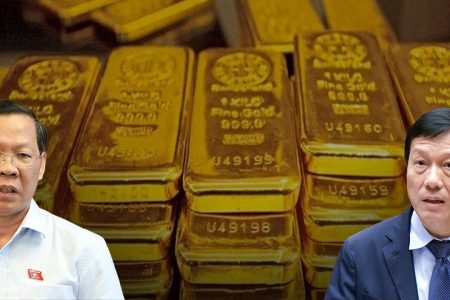
More than four months after the first container train from Hanoi arrived in Liège, southern Belgium, the Vietnamese rail transport industry is pleased with the potential of developing a new transport axis, parallel to the sea. Vietnam has „enjoyed“ the China-Europe Express route, part of the Belt and Road Initiative (BRI) initiated by Chinese President Xi Jinping in 2014, to bring goods to Western Europe.
Rail Transport and Trade Joint Stock Company – Ratraco, the operator of this route, said 28 trains, with about 644 40-foot containers, had gone to Europe since the first train departed to Liège from July 20 to the end of November 2021. In fact, container ships from Vietnam do not go directly to Belgium but have to go through Zhengzhou (Zhengzhou, Henan province), the starting point of the rail transport route connecting Liège (Belgium), which was inaugurated on October 24, 2018.
Liège became the third destination in Belgium of the China-Europe Express rail network (including Daqing – Zeebrugge port from June 2017, Tángha- Anvers in May 2018, and Zhengzhou-Liege on October 24, 2018). With the railway network that China is constantly expanding, container trains from Vietnam to China, depending on the destination in Europe, will be connected to different freight trains to Russia, Poland, Germany, England, Belgium, etc.
What benefits does the development of railway exports to Europe bring to Vietnam? What role does the China-Europe Express network play? RFI Vietnamese interviewed Professor Eric Mottet, Catholic University of Lille, France.
*****
RFI: On July 20, 2021, a freight train departed from Hanoi to the Belgian city of Liège and used the China-Europe Express route. How important are China’s railway lines to Vietnam’s export transport sector?
Eric Mottet: Yes, the first train connecting Vietnam and Belgium departed on July 20, 2021, specifically from Yen Vien station, Hanoi to the Belgian city of Liège. A good point here is that the train departed from Vietnam and then connected to the China-Europe Express network (China-Europe Express), from Zhengzhou, through Kazakhstan, Russia, into Europe via Belarus, then through about 30 other cities in Europe, and the destination is the city of Liège in southern Belgium.
Initially, this was a train chartered by the Décathlon company. Décathlon is very popular in France, selling sports equipment, a very popular item in Europe. The company tested it by shipping 23 containers by rail at the end of July. The trip is quite long, takes about 30 days, and is operated by Ratraco Railway Trading and Transport Joint Stock Company. Ratraco is very well known in Vietnam and is also the operator of the Hanoi-Lao Cai transport railway, co-managed with the Danish company Maersk.
So far, this has been a success. Since the start of the transport on July 20, there are several departures every week. I think there were a total of more than 30 trips from Hanoi to Liège in Belgium and carrying nearly 700 containers of goods, including machinery, electronics, textiles, and fabrics. Currently, 3 flights a week, but hopefully from 2022 will increase to 4, even 5 flights per week. It can be said that from an experiment at the end of July, it is now probably a success. Surely this transport route will accelerate from 2022.
RFI: Can rail transport become an important solution for Vietnam’s exports beyond the sea?
Eric Mottet: As mentioned above, this is a new type of transport, facilitating Vietnamese exports to Europe while Vietnam and the European Union have signed the Free Trade Agreement (EVFTA). For Vietnam, it is interesting that this form of transport has attractive costs and is within a reasonable and reliable time frame. As I said above, each freight train to Europe takes about 30 days, less than the time it takes to ship by sea by 15-20 days.
In addition, since the Covid-19 pandemic crisis, the cost of transporting containers by sea has increased a lot and the transportation system is also very chaotic. This means that now there is almost no space left in the shipping containers from Asia to Europe and because there is no space, the cost of sea freight is very expensive. Therefore, Vietnam has seen an opportunity to export goods to Europe by rail at reasonable prices.
But it must be admitted that at present this way of transportation is still limited because there are only a few trips per week. There will probably be more than eight flights per week from 2023 if all goes well. Therefore, it must be said that rail transport is not an alternative to exporting by sea. But anyway, Vietnam has an interesting solution because now there are many contracts produced in this Southeast Asian country, including sportswear manufacturers, followed by warehouse shortages in Vietnam.
All these factors force Vietnam to find an alternative method to export goods to Europe. I would like to reiterate that rail transport has advantages in terms of cost, time and helps to avoid the difficulties associated with sea transport today.
RFI: However, it can be seen that using the Chinese railway system, Vietnam is somewhat more dependent on its northern neighbor?
Eric Mottet: It is true that this can happen in the context of the Covid-19 epidemic that has lasted for two years and in the case of political disagreements with Beijing. China can close the border and prevent Vietnamese cargo ships from entering the country to go to Europe, but this has not happened yet.
Indeed, China also needs to benefit from the transport infrastructure system, so it welcomes Vietnam to use its railway system. This is important for Beijing to repay the huge investments in infrastructure built in China. And to make a profit, it is necessary for some countries, such as Laos, Thailand, and Vietnam, to use these intermodal routes to export goods. Currently, this is also the only railway route for Southeast Asian countries to export goods to Europe.
RFI: It can be seen that Vietnam is pleased to become a partner of China when using the railway system within the framework of the Belt and Road (BRI) project. Why is Hanoi hesitant to participate in railway infrastructure projects that China wants to expand through Vietnam and down to Southeast Asia?
Eric Mottet: It is true that China lends at favorable interest rates. In addition, there are currently not many alternative sources to Chinese credit, as well as investment in infrastructure, even though a few weeks ago, the European Union announced it would invest massively in infrastructure projects, the United States will do the same. However, China is still a huge investor in infrastructure projects, including many Southeast Asian countries.
Vietnam hesitates for a simple reason: it doesn’t want to fall into a debt trap. We see what happens on the Lao side or in many African countries with huge sums of money. When it comes to several billion dollars, it’s clearly loans! In addition to the debt trap, Vietnam is also concerned about losing its sovereignty over infrastructure works. If China invests 80% or 100% of the infrastructure in Vietnam, it will have to lead to co-management by both sides. The Hanoi side may have to ask many questions to see if it will lose control of that project, right on its territory. We still know sovereignty is an important issue in Vietnam.
Also, the real reason that might make the government hesitate is that the Vietnamese people have a rather negative view of China. The latest example is the inauguration of the elevated train line No. 2 in Hanoi, many Vietnamese people announced or called for a boycott of the route funded and built by China. Another factor is the suspicion of delay. Tram line 2 in Hanoi has been much slower and costs much more than originally planned. It can be seen that there are many reasons for Vietnam to hesitate about participating in the Silk Road project in its territory.
Next, there are also external factors to consider. The United States and the European Union have, in one way or another, „pushed“ Hanoi not to join China’s infrastructure ambitions. Therefore, a series of bilateral agreements were signed, foreign direct investment capital continuously poured into Vietnam so that Hanoi would not lean towards the new Silk Road project.
However, if you look at the Chinese-built elevated train project in Hanoi, it can be seen that Vietnam has participated in China’s Silk Road project anyway. In short, Vietnam’s position on China’s Belt and Road Initiative can be defined as follows: participation but not massively and officially, for many reasons, such as debt problem, and loss of ownership. Vietnamese rights and people lack sympathy for China’s major infrastructure projects
RFI: So it will be difficult to have a high-speed railway in Vietnam funded and built by China?
Eric Mottet: Currently, there is no high-speed railway connecting China and Vietnam. This issue is not mentioned at all, maybe in the years 2040-2050 but now neither the Vietnamese nor Chinese governments have such projects.
China already has a high-speed rail route through Laos, so it may not really need to go to Vietnam to get down to Thailand, Malaysia, and Singapore. This shows that Vietnam will promote railway connectivity with neighboring countries because, in October 2021, the Vietnamese government announced it would invest about $10 billion over 10 years to build or renovate its high-speed railway. Although China may not be a major and important investor in projects to build and improve railways in Vietnam, it is still possible that Hanoi wants to promote the railway industry and deploy it at the same time as freight trains. This transport route will connect Vietnam with Laos, Thailand, Cambodia, and of course with China.
Vietnam’s priority for the railway industry is also based on the issues of cost, speed, and environmental factors, which are very important now. In my opinion, Vietnam can no longer delay and will connect itself with infrastructure works in neighboring countries, as well as China.
RFI Vietnamese would like to thank Professor Eric Mottet, Catholic University of Lille in France.
Thoibao.de (Translated)









